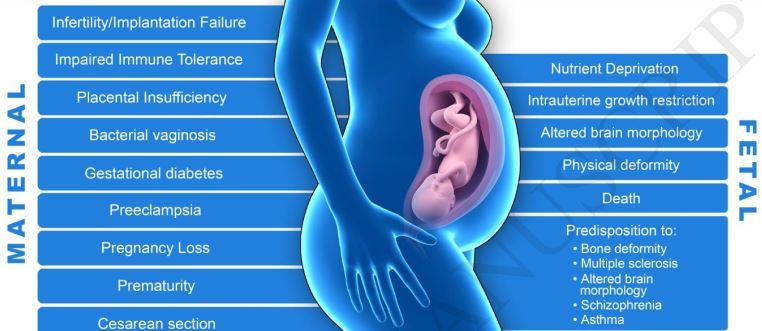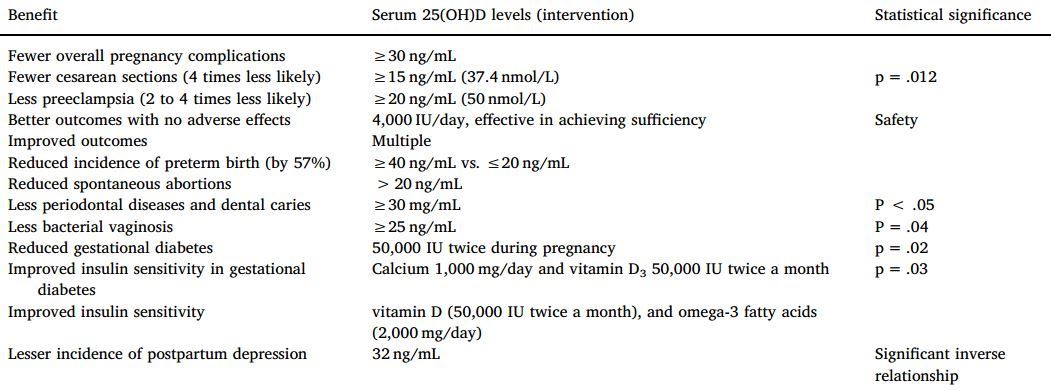Vitamin D - Effects on Human Reproduction, Pregnancy, and Fetal Well-being
The Journal of Steroid Biochemistry and Molecular Biology, online 17 Dec 2017, https://doi.org/10.1016/j.jsbmb.2017.12.011

📄 Download the PDF from Researchgate via VitaminDWiki
E.L. Heyden a, , S.J. Wimalawansa b, ,
Highlights
Vitamin D deficiency may exceed 40% among pregnant women, subjecting both mother and fetus to adverse consequences and outcomes.
Maternal vitamin D deficiency increases the risk of preeclampsia, bacterial vaginosis, gestational diabetes, spontaneous abortions, and preterm labor and can harm the fetus by growth restriction, physical deformity, and increasing future health risks.
In humans, insufficient UVB exposure is the primary cause of vitamin D deficiency; lifestyle choices are the predominant cause of insufficient exposure to sunlight.
Diet typically supplies less than 10% of the human need of vitamin D, necessitating safe UVB exposure or supplementation.
Emerging data and evolving consensus place the need for vitamin D supplementation at 4,000 IU per day during pregnancy for optimal healthy pregnancy and its related outcomes.
Offspring Benefits

Maternal Benefits

Pregnancy places exceptional demands on vitamin D and calcium availability; thus, their deficiencies during pregnancy threaten the woman and her fetus. Globally, vitamin D and other micronutrient deficiencies are common during pregnancy, especially in developing countries where pregnant women have less access to supplements. Vitamin D deficiency has been reported to be as high as 40% among pregnant women. As a pregnancy progresses, the requirements for vitamin D increase and can worsen preexisting hypovitaminosis D.
Consequently, hypovitaminosis D is associated with a higher incidence of
fetal miscarriage,
preeclampsia,
gestational diabetes,
bacterial vaginosis, and
impaired fetal and childhood growth and development.
This review explores the recent advances in the understanding of vitamin D and the pivotal role it plays in human reproduction, with an emphasis on pregnancy. Given the seriousness of the issue, there is a pressing need for clinicians to become aware of the risks associated with not identifying and correcting vitamin D deficiency. Identifying and correcting vitamin D deficiency, including safe exposure to sunlight, is particularly relevant for those who seek assistance with fertility issues or prenatal counseling and those in the beginning of their pregnancy. The data point to a significant protective effects of vitamin D during pregnancy when the 25(OH)D serum level exceeds 30 ng/mL before pregnancy and during the first trimester and, sufficient levels are maintained throughout the pregnancy.
